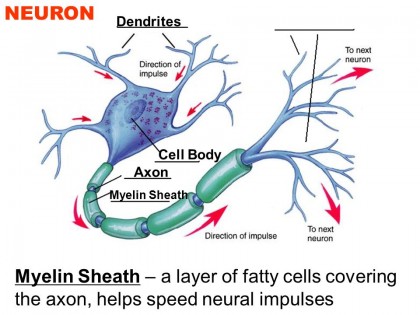Lughnasa Waning Summer Moon

Alan came over for work on the religious school lesson plans. Kate made her oven pancakes (always delicious) and Alan told us stories about early Jewish Denver. West Colfax (think Lake Street) between Federal and Sheridan was an orthodox Jewish community when he grew up. He said on Friday afternoons with folks scurrying from the deli to the bakery to the kosher butcher it looked like, well I can’t recall exactly, but any typical European Jewish community.
His dad was going to be a University professor before the Holocaust. Instead he came here and ended up in the dry cleaning business. In those day Alan’s friends and neighbors were either children of Holocaust survivors or survivors themselves. That old neighborhood, like north Minneapolis, has completely changed. The first synagogue in Denver is now an art museum on the Auraria campus of the University of Colorado. The Jewish community concentrated itself in south Denver, more to the east.
We worked for a couple of hours, putting specific lesson plans on the calendar, deciding which days to do the Moving Traditions curriculum, which days for middah, which days for Jewish holidays, which days for our own lesson plans. I’m experiencing some anxiety about this since we start next Wednesday with the first family session of the Moving Traditions curriculum. This approach to the student preparing for their Bar or Bat Mitzvah will, apparently, be controversial because it doesn’t focus on the ritual of the morning service, but on the students’ social, emotional, and developmental needs. Alan, Jamie, and Tara will deal with that. Not me.
 Kate’s had several days in a row with no nausea. Yeah! That means she feels better and can get some things done. In doing so, however, the extent of her loss of stamina, weight loss and Sjogren’s Syndrome, has become apparent. She still needs to rest frequently. If she can modulate the nausea, either through careful eating or an eventual diagnosis or using medical marijuana, the next step is to get some weight gain, some stamina improvement. If possible. Or, we may have to adjust to a new normal.
Kate’s had several days in a row with no nausea. Yeah! That means she feels better and can get some things done. In doing so, however, the extent of her loss of stamina, weight loss and Sjogren’s Syndrome, has become apparent. She still needs to rest frequently. If she can modulate the nausea, either through careful eating or an eventual diagnosis or using medical marijuana, the next step is to get some weight gain, some stamina improvement. If possible. Or, we may have to adjust to a new normal.
I’ve been absorbed in lesson planning, training for the school year, climbing my steep learning curve about matters Jewish and matters middle school. That’s my way. Dive into something new, leave most other things behind until I’ve gotten where I feel like I need to be. Not there yet, though I imagine after a few class sessions, I will be. Sort of a head down, blinkers on time. My writing has dwindled and so have submissions.
Over the last couple of weeks, while I work out, I’ve been watching a Teaching Company course on the aging brain. I recommend it. Highly. It’s helped me understand why this approach, head down blinkers on, is developmentally appropriate for me. For example, the aging brain, on average, loses some processing speed, executive functions, and crispness of episodic memory (memory tied to a person or place and seen from a first person perspective.) over each decade, beginning in the twenties.

The underlying issue seems to be gradual demyelination of the axons which constitute the white matter in our brain. With myelin sheathing over their length axons can carry information very fast, without it somewhere around 2 meters per second, or human walking speed. As our processing speed declines, so do brain functions like the executive management of brain activity by the prefrontal cortex. It’s this one, the decline in executive function, that requires the head down, blinkers on approach to new activity or to tasks we need to complete. As we age, we no longer handle distractions as well, getting pulled away from this to focus on the shiny that.
I like knowing this because it helps me understand my daily third phase life better. The thinking process itself is not impaired, just the speed and our ability to stay with a task. It helped explain a very uncomfortable moment for me at the Genesee Ropes Course on Sunday. Jamie and I were with the 6th and 7th graders. Adrienne, a ropes course employee had just explained the rules of a warmup game. One of the rules was that we had we could not throw a soft toy to someone who’d already gotten one on that round.
 I got the stuffed unicorn on the third or fourth toss. When I tossed it to Alex, Adrienne asked, “Did he break a rule?” All the kids and Jamie nodded. Yes, he had. Why? Alex had already gotten the unicorn. Oh, shit. This was the first interaction between me and these kids as a group and I looked like a doofus. I didn’t remember the rule at all. There were plenty of things to distract me. The continental divide in the distance. A wind blowing through the trees. Trying to concentrate on learning kid’s names. General anxiety about not knowing the kids at all. Whatever it was, my executive function let me go, Oh, fish on bicycle, instead of hearing, no throwing to someone who’s already received it.
I got the stuffed unicorn on the third or fourth toss. When I tossed it to Alex, Adrienne asked, “Did he break a rule?” All the kids and Jamie nodded. Yes, he had. Why? Alex had already gotten the unicorn. Oh, shit. This was the first interaction between me and these kids as a group and I looked like a doofus. I didn’t remember the rule at all. There were plenty of things to distract me. The continental divide in the distance. A wind blowing through the trees. Trying to concentrate on learning kid’s names. General anxiety about not knowing the kids at all. Whatever it was, my executive function let me go, Oh, fish on bicycle, instead of hearing, no throwing to someone who’s already received it.
It still looks the same to the outsider. I missed the rule, and as a result, screwed up in its execution. But now I understand that this is not a sign of dementia or other deep seating problem, but rather a normal, though irritating, side effect of demyelination.
